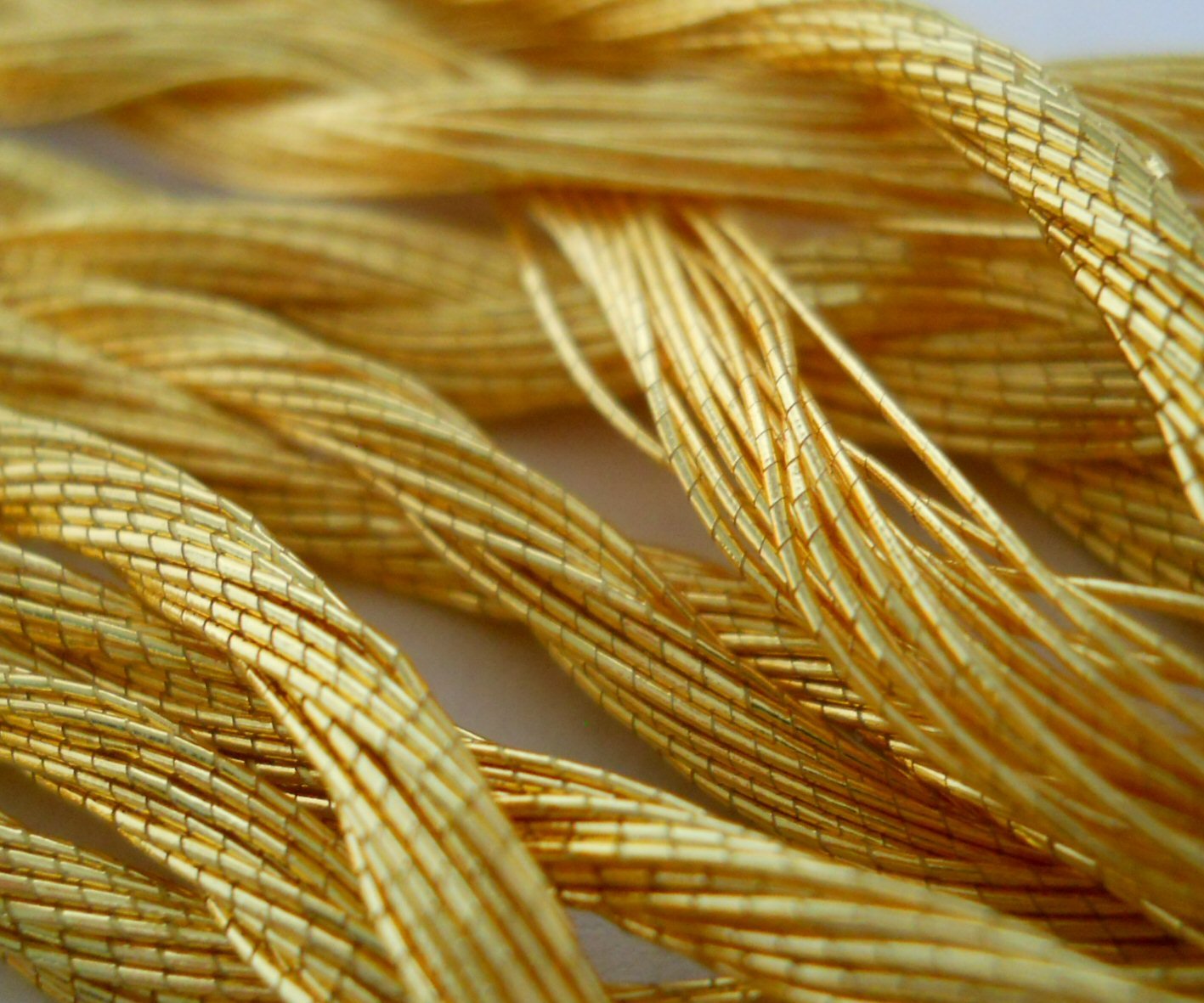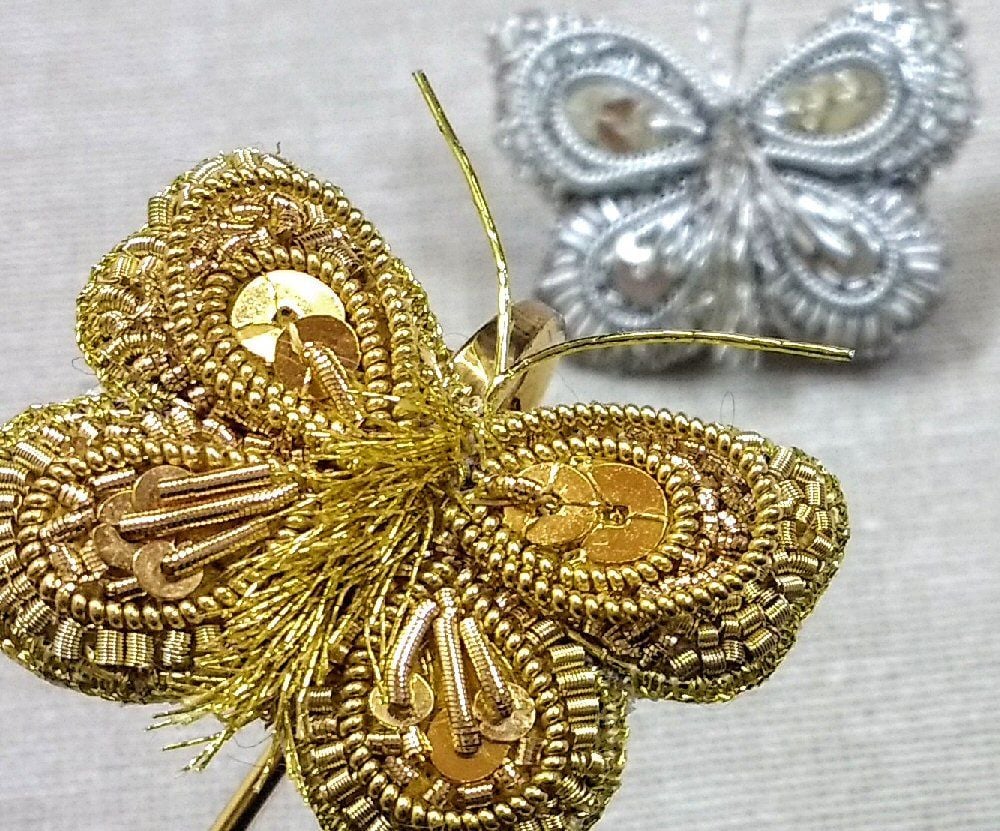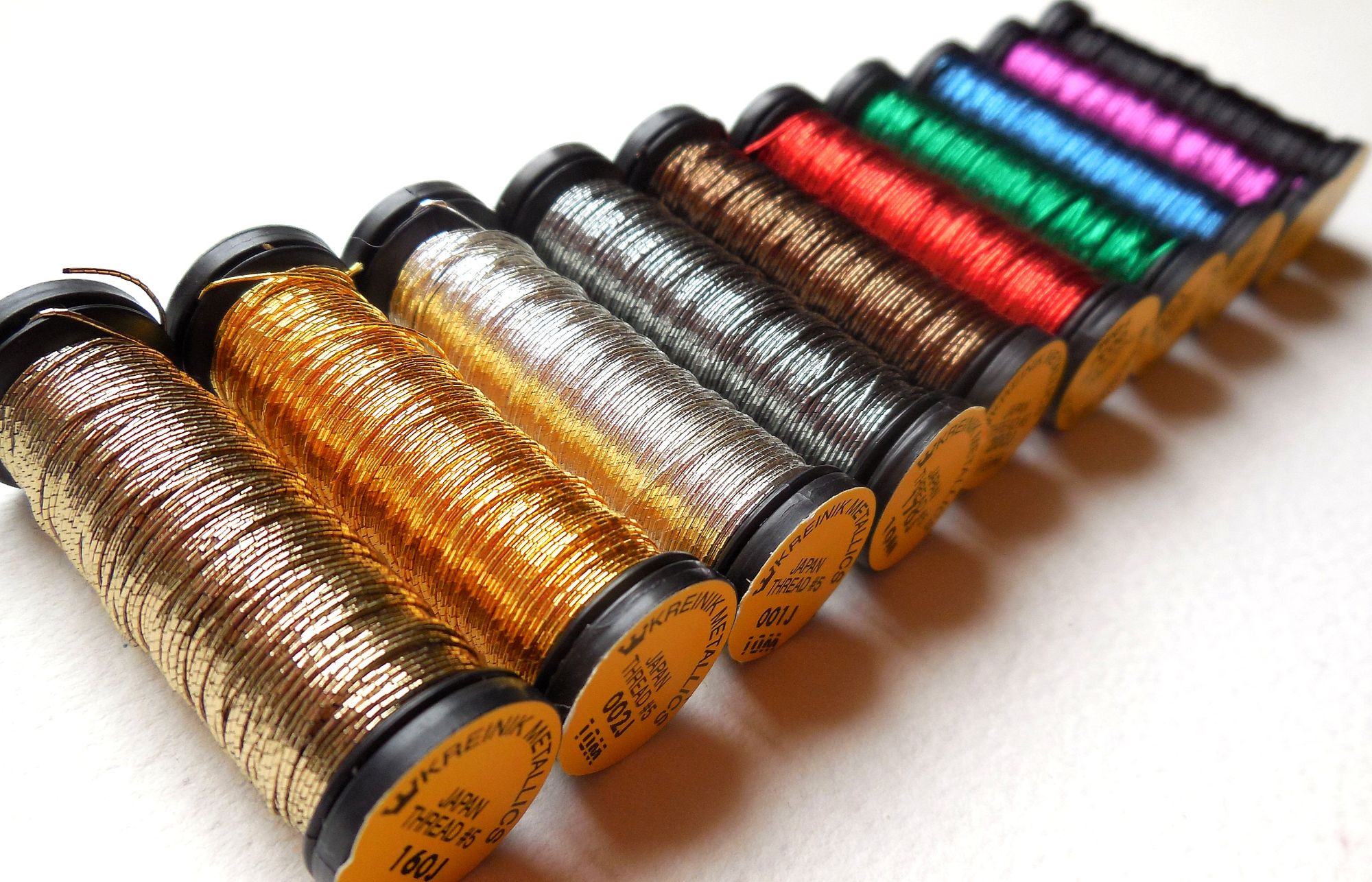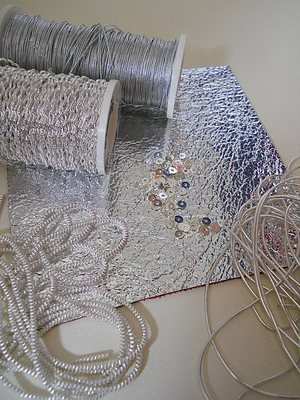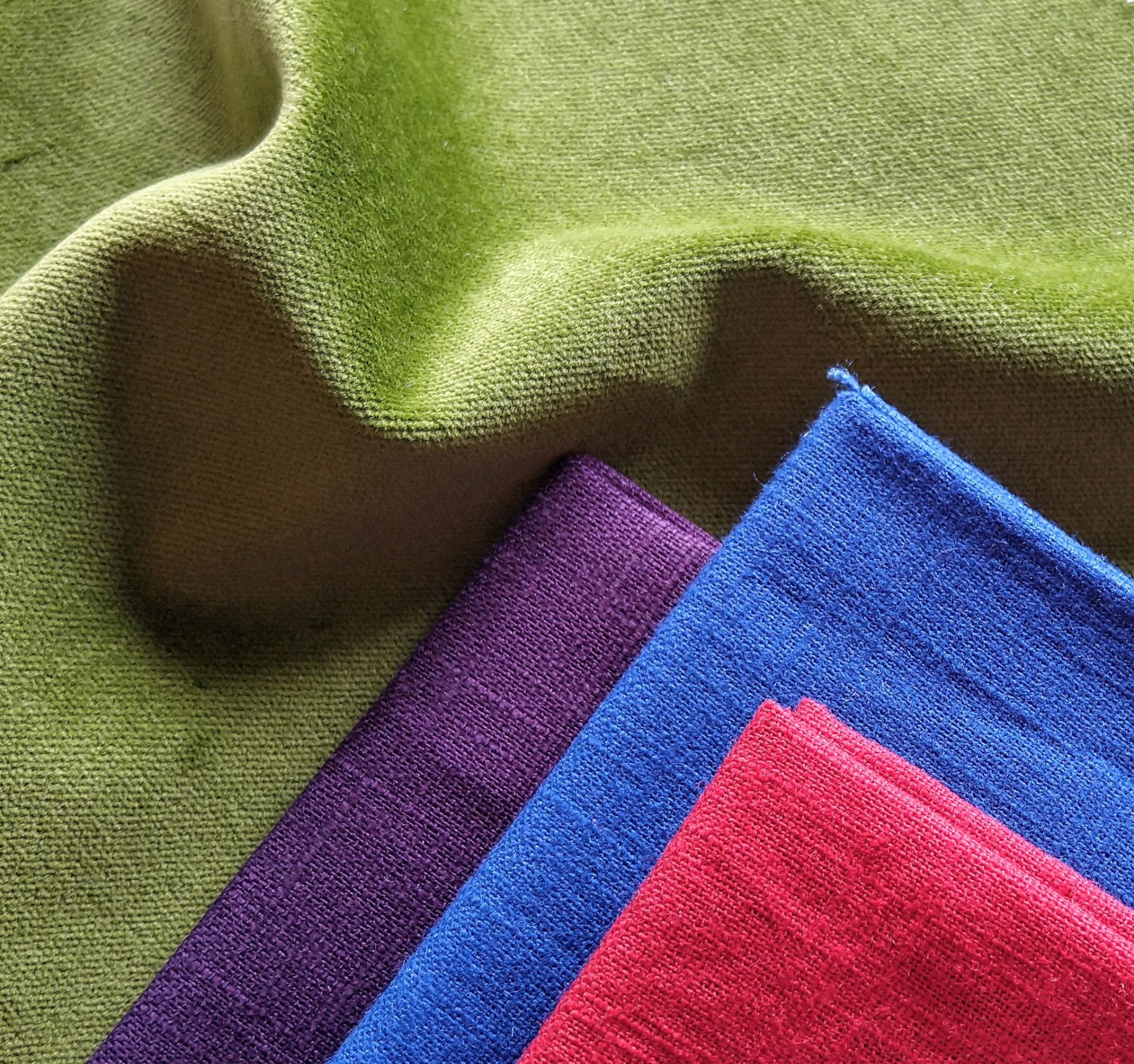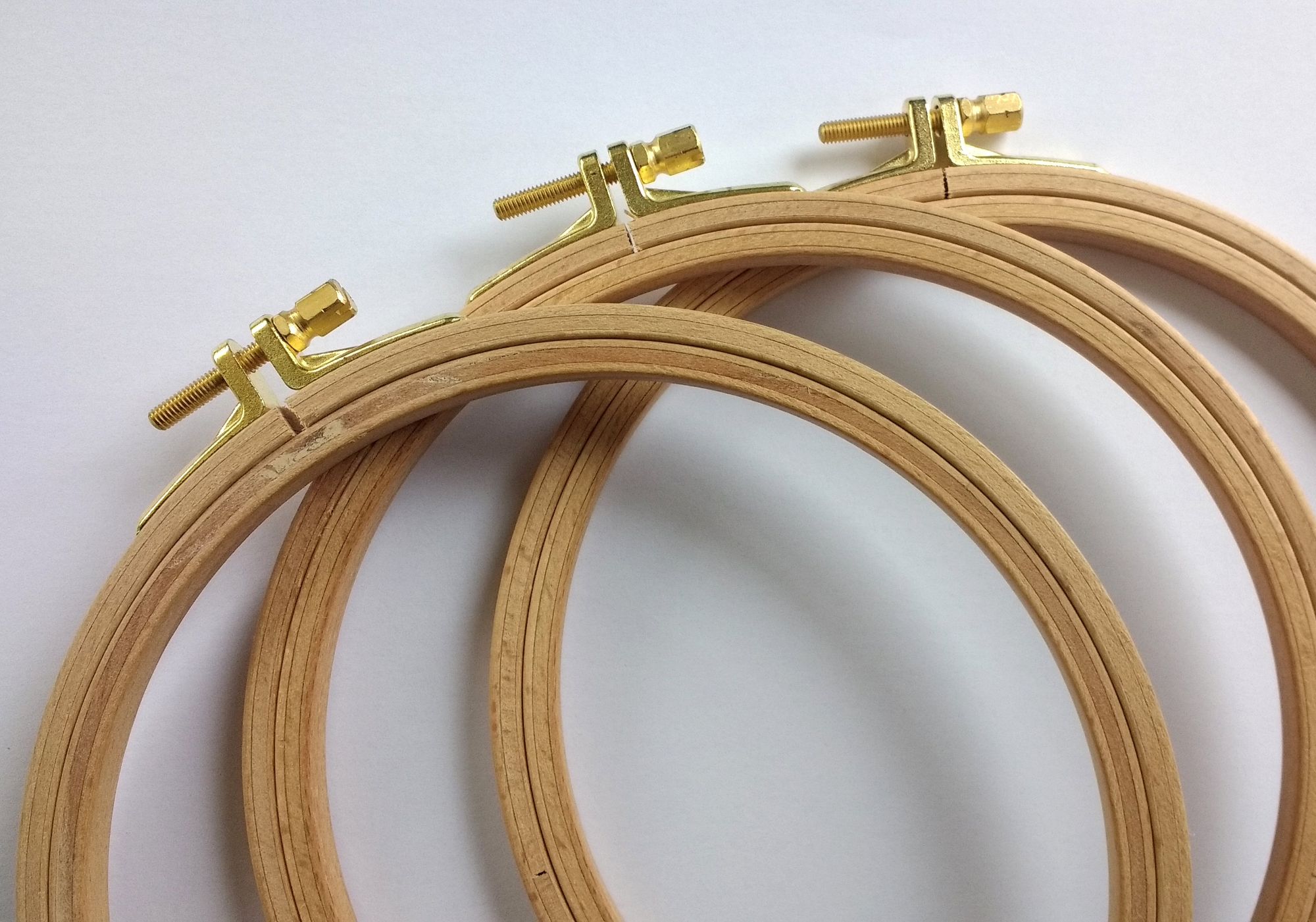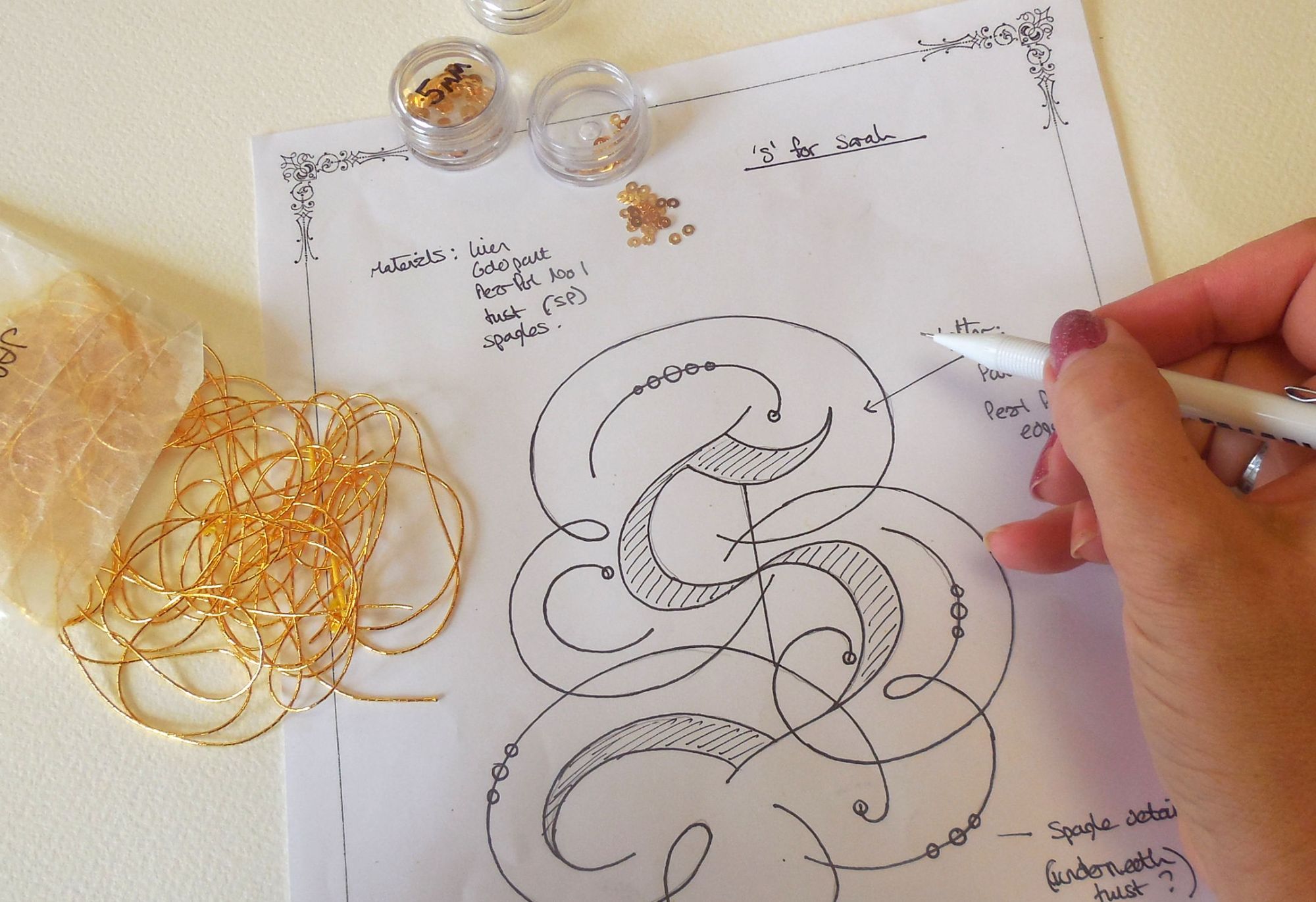Beginning Goldwork Embroidery
If you have always wanted to have a go at goldwork embroidery but but it all looks really confusing then let Sarah guide you through the process right here! Below you will find out all about the different types of threads and metals, what equipment you need, what fabrics are good to stitch goldwork on and then follow along with our new beginners goldwork embroidery video to have a go at your first piece of goldwork!
Goldwork threads and metals explained!
Equipment for goldwork embroidery
Beginner's Goldwork design to stitch
The goldwork materials download
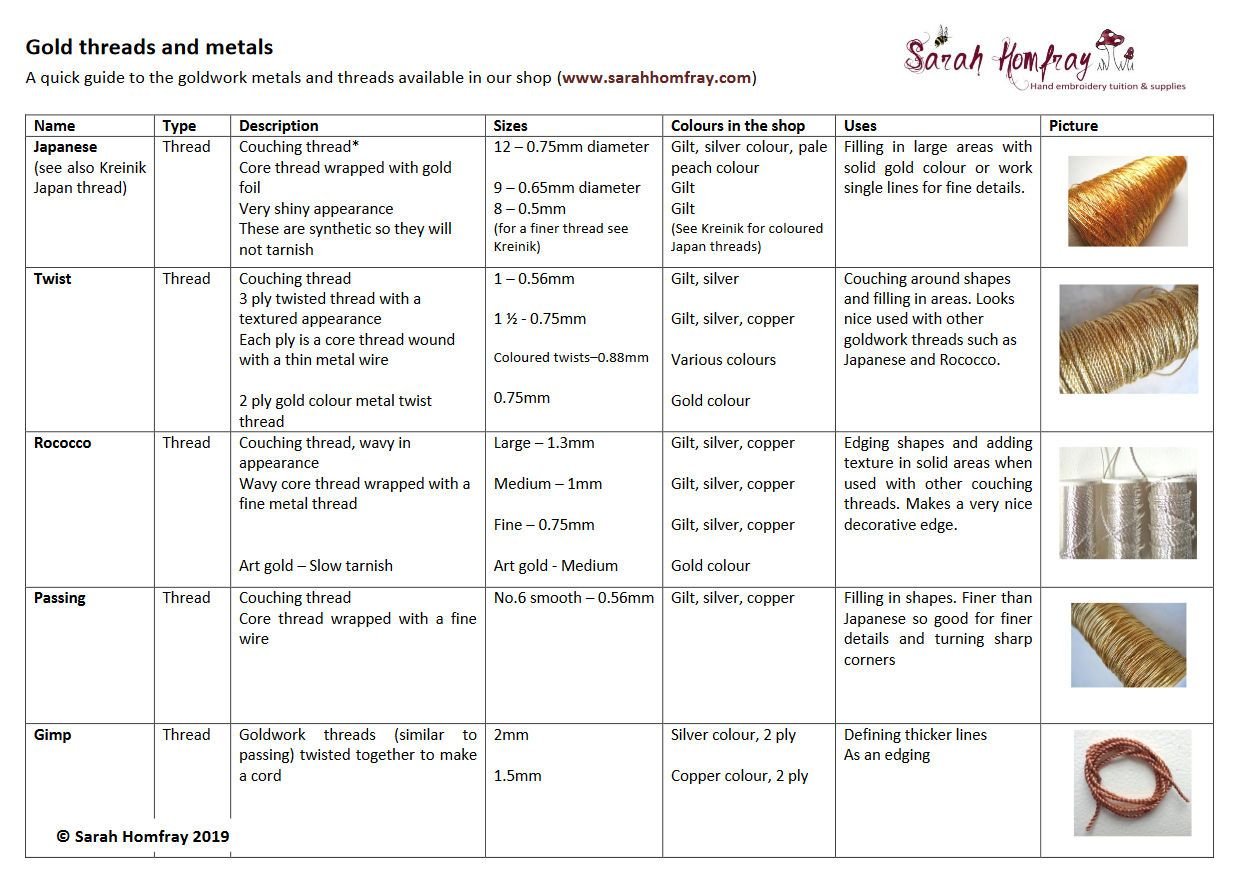
What is goldwork?
Put simply, embroidery done using gold (more about this later!) threads and metals. This is the name of the technique rather than the colour; goldwork can also mean embroidery worked in silver and copper threads, and now thanks to more modern inventions, coloured metal versions also.
Gold was originally incorprated into embroidery over a thousand years ago in the form of pieces of gold beaten into flat ribbon like pieces. This was then stitched over rather than stitched with and was used on the robes of Kings and clergymen, symbolising their wealth, status and power.
The threads and metals have changed alot over the years as new manufacturing methods and materials have come into existence, and there is now an almost overwhelming amount of threads and metals to choose from. Check out our video here for an explanation of the most common ones used and the difference between gold threads and gold metals.
Goldwork threads are made of gold right?
Once upon a time! Although you can still get goldwork metals and threads with a gold content (the hightest you will find is with 2% gold) most metals have a 0.5% gold content and are known as Gilt. Embroideries worked in the 2% gold threads and metals have a different feel about them; the cost of this metal over the gilt means that it's generally kept for special occaisions! These threads can also tarnish (gold will go brown) so something to be aware of if this might be important. If you want threads that don't tarnish look for synthetic ones or Art Gold which tarnishes differently and goes a more brassy colour rather than brown.
The silver threads and metals are usually silver plated and these will tarnish to a black colour.
Copper are copper and infact most of the wires have a copper base to them.
Our download will tell you the content of each of our threads and metals.
Embroidery fabric for goldwork
You can basically work goldwork on any kind of fabric but there are fabrics you can use that will make the process easier, especially while you are learning. Try a natural fabric such as a cotton, linen or cotton/linen blend. These won't stretch, distort or slide around in your embroidery hoop. Gold shows up beautifully on a darker colour but this doesn't have to mean black! Dark purple, red and blue look stunning. Goldwork on silk and velvet is very traditional (the fabrics of those Kings and Clergymen!) but these require a little extra knowledge so work your way up to them.
A backing fabric is often useful too although not essential. Goldwork can be quite heavy with dense areas of stitching especailly if worked over padding, so a piece of cotton on the back will just help to stabilise everything.
We have a large choice of linen fabrics available in our shop here (and backing fabric also!); a great place to begin your goldwork journey!
Embroidery frames
Like all embroidery, it's a good idea to have both hands free for goldwork so get yourself some sort of frame to hold your fabric in and a clamp to hold the frame steady. Ring frames, stretcher bars and slate frames will all do the job nicely depending on the project your are working on. hold your frame in some sort of clamp so you can have two hands to work with (more on this below). Just a note on this, you are more likely to find the stretchbar frames in the US and the ring frames in the UK and Europe. We have both available on our website here, in lots of different sizes.
Frame clamps: These aren't essential but will make it much easier to be accurate with your goldwork so if you have a go and like this technique then do consider one. They clamp around your chosen embroidery frame allowing you to use both hands freely. I use the versatile table clamp in all of my videos (I use two for ease of filming but you only need one!); you can see a video of that and purchase one here.
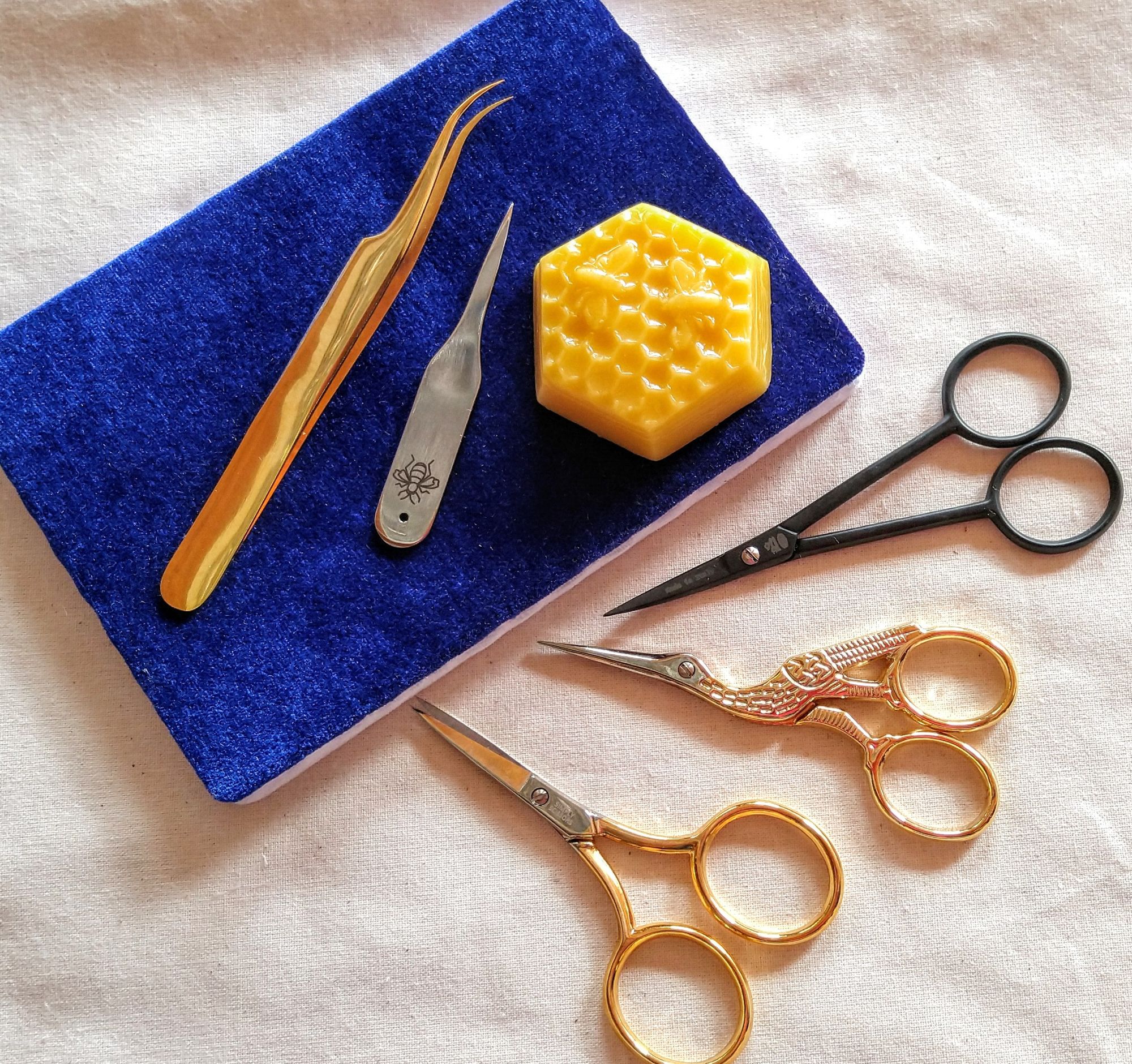
You will need a few other things before you can begin but they are essential!
Needles - This is a huge subject and the sheer number of different types and sizes available can be overwhelming; It is important to have the right one as the wrong one will leave you unnecessarily frustrated. We have a whole video about the different types and when to use what and also a video on how to thread your needles to (there is a tried and tested method!). You can see both of those by clicking on these links:
Generally you will need very fine needles for goldwork so that you can be accurate. A number 10 embroidery needle is ideal, if you can't see to thread this easily start with a number 9 and work your way to a number 10. If you have good eyesight you could used the smallest needle, a number 12! You can buy your needles here.
Scissors - Use a good sharp pair of embroidery scissors for cutting your sewing threads. It's also very useful in goldwork to have another pair just for the goldwork threads and metals. Most of these are made with some metal content which can blunt your best embroidery scissors so have another pair just for this. You can also get specialist goldwork scissors with a serrated edge for cutting the metal purls; we have these and a good variety of scissors available in our shop here.
Beeswax - An essential item used to wax your sewing thread to stitch down the gold threads and metals
You will find a few other pieces of equipment useful for goldwork embroidery specifically:
Velvet board - This is very handy for cutting up the metal threads into 'chips' and stops them rolling around!
Mellor - This is a laying tool which helps you to place your goldwork threads and metals accurately.
Embroidery designs for goldwork
As with all types of embroidery there are loads of designs that you can get off the internet but as I mentioned on the beginners embroidery page please be aware of copyright and respect the designers skill and time it takes to make the designs. Read more about this on the beginners page here.
We have free designs on our website for you to use non commercially (i.e. please don't make money from them). You can download them from here and print them off. I will keep adding to this to build up a library of designs for you to use. Of course the best thing to do is to design your own, but this is another subject all in itself that I will tackle another time!
Goldwork is a very styalised technique so as a guide, designs with clear shapes, outlines and areas to fill in will work well. You can adventure into other styles as you progress!
An embroidery teacher!
Now you need to learn some techniques! There are some really lovely books out there on goldwork but even better than a book, and especially for something as technical as goldwork, is to actually see someone doing the techniques in real time! We have a great goldwork playlist for you covering everything from the types of threads and metals, padding, couching and some stitch along projects. They are free for you to watch and you can see them here on the website or you can view them on our YouTube channel here. If you watch them on YouTube you can always ask me a question in the comments underneath and I will do my best to help you! Why not start with our simple project at the top of the page? For those who prefer a kit, our little bee is a great one to get you going! You can buy him here.
I hope this has inspired you to have a go at goldwork embroidery. These are just the basics, so start simple and learn the main techniques of goldwork then you can add to your knowledge as you become familiar with the materials and the methods. Check out our shop below for the essentials you might need to get going!
Happy stitching!
Sarah

